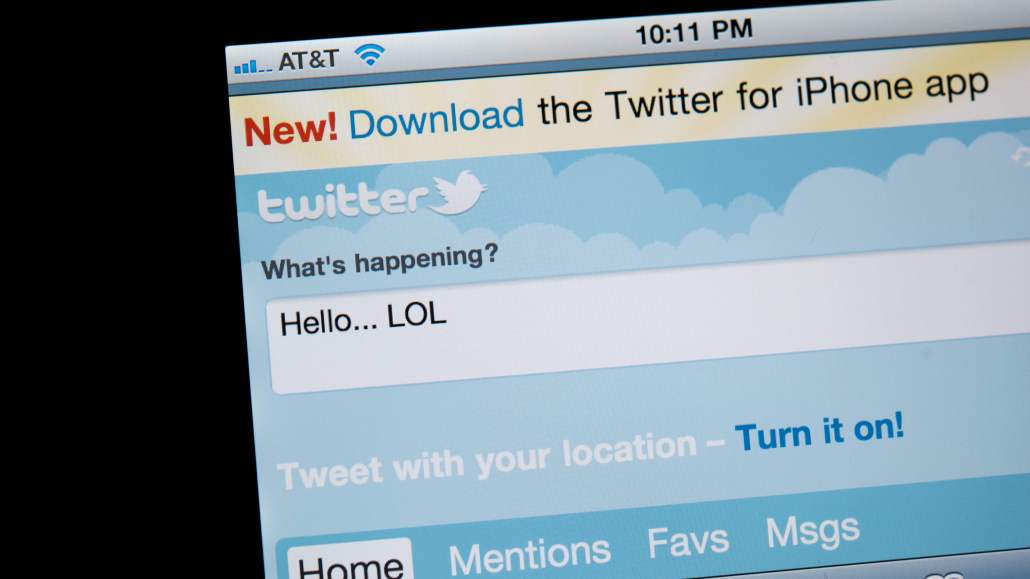
Twitter’s IPO filing was made public today ahead of its planned initial public offering. Here’s what it told us about its ad business that we didn’t already know:
Ad revenue is up 119 percent, year-over-year.
In the six months that ended June 30, 2013, advertising revenue increased by 119 percent compared to the six months that ended the same time last year. The increase was primarily attributable to a 79 percent increase in timeline views in the six months running up to June 30, 2013, the company said, as well as increased demand from advertisers. That said, its revenue growth appears to be slowing, relatively speaking. In 2012, advertising revenue increased by 247 percent compared to 2011.
Mobile is going strong.
In the three months that ended June 30, 2013, Twitter said more than 65 percent of its advertising revenue was generated from mobile devices. Three-quarters of its monthly active users accessed the service from mobile devices, it said, including mobile phones and tablets.
It’s monetizing its users more successfully.
Twitter uses a metric it calls “advertising revenue per timeline” to judge the performance of its ad products. That’s basically the ad revenue generated from 1,000 timeline views. In the three months that ended June 30 of this year, its ad revenue per timeline view in the U.S. was $2.17, representing an increase of 26 percent over the revenue it generated in the same period last year.
Twitter relies heavily on the U.S. market for ad revenues.
Unsurprisingly Twitter generates the majority of its ad revenues from U.S. users, as opposed to international tweeters, but the discrepancy is a big one. Advertising revenue per timeline from non-U.S. markets was just 30 cents during the three months that ended June 30, 2013, a lot lower than the $2.17 it garnered from U.S. timelines.
Twitter is an ad company.
Twitter generates some revenues by licensing access to its data but that’s nominal, it says. A full 85 percent of its revenues come from selling promoted tweets, promoted accounts, and promoted trends.
More in Media

Media Briefing: The top trends in the media industry for 2025
This week’s Media Briefing takes a look at the top trends from 2025, from digital advertising revenue performance to AI licensing deals.

Digiday Scorecard: Publishers rate Big Tech’s AI licensing deals
Digiday has compiled a scorecard grading AI platforms to make sense of the growing number of players in the AI content licensing market.

Publishers are hunting for AI prompt data — now they’re starting to get it from third-party companies
Publishers are finally gaining some visibility into AI search, as new prompt data tools crack open a black box.





